About Shadai Gallery
Tokyo Polytechnic University is the most traditional and longest-established photographic institution in our country since 1923. Among other university establishments, Shadai Gallery was opened in 1975 as Japan’s pioneer facility and existence that exhibits, collects and researches both domestic and international photographs.
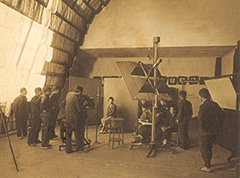
Photo studio soon after the establishment of university(around 1927)
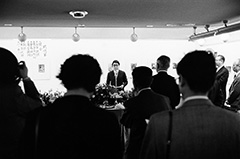
Eikoh Hosoe at the opening of Shadai Gallery
When talking about Shadai Gallery, it is inseparable with one of the leading Japanese photographers, Eikoh Hosoe, who was the founding director of the gallery. Hosoe, born in 1933 is known for his series such as “Ordeal by Roses” (1963) modeled by Japanese author Yukio Mishima, and “Kamaitachi” (1969) which documented Japanese choreographer Tatstumi Hijikata. Since young, hosoe’s style of shooting numerous human bodies as his portrait gave sensations throughout the world. In 1975, Hosoe, who was already a striking photographer at the time, acceded as a professor at Tokyo Polytechnic University. As one of the conditions as becoming part of photographic education, he suggested the installation of a gallery for the spread of the art.
Back in 1975, photographs were already exhibited and archived like any other art genre, such as paintings and sculptures at museums across the United States and Europe.
In Japan, however, such culture was not yet accustomed and there were no such public institutions that followed the manner. Hosoe made a point that the most effective way to express “ the wonderfulness of photography” and “the love and respect to photography,” is to make a gallery within an academic facility. With this strong will, Shadai Gallery welcomed its opening with the exhibition of “ Wynn Bullock” on May 20th, 1975.
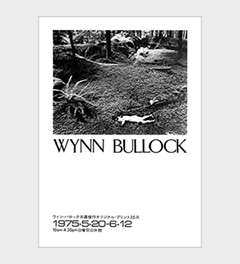
Invitation of Wynn Bullock Exhibition(1975)
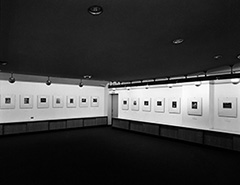
Wynn Bullock Exhibition(1975)
Wynn Bullock (1902-1975), a famous American photographer participated in “The Family of Man” held at the Museum of Modern Art in New York in 1955 with his “Let There Be Light” (1954) used as the leadoff piece. The exhibition was to celebrate the museum’s 25th anniversary and it toured around more than 38 countries worldwide, allowing nine million people view the show. His exhibition at Shadai Gallery was his first solo show in Japan, and it became a big focus.
Since then, Shadai Gallery has organized numerous solo exhibits of well-known foreign photographers and historically signified domestic photographers. During the exhibitions, the gallery often invites the artists for special workshops and talk shows involving students as well as general visitors.
When Shadai Gallery was opened, Tokyo Polytechnic University held its original name, Tokyo College of Photography (Tokyo Shashin Daigaku), which was called Sha-dai for short. Hence the name of the gallery came from this abbreviation but even after the school name changed to Tokyo Polytechnic University in 1977, the gallery name stuck to this day.
Shadai Gallery archives more than ten thousand photographs and as for an institution affiliated with an educational establishment, this number should be renowned to the world.
The gallery’s collection includes works from worldly known photographers such as William Henry Fox Talbot, Nadar, and Edward Weston as well as Ihei Kimura, Shomei Tomatsu and Ikko Narahara. Also among them, over twelve hundred important works of Ken Domon and a nine hundred early works of Daido Moriyama should be noted as an important part of the collection.
These collections are put to practical use for education and research daily, and are exhibited to the public for photography fans inside and outside of campus throughout the year.
Current exhibition
Shadai Gallery 50th Anniversary Commemorative Exhibition II
Wynn Bullock Photography Exhibition: Reminiscence (2025→1975)
Exhibition Overview
This exhibition, in commemoration of the 50th anniversary of the Shadai Gallery, features the work of Wynn Bullock (1902-1975), whose solo exhibition was the inaugural event of the gallery in 1975.
Wynn Bullock was born in Chicago and, after graduation from high school, he moved to New York to pursue a career in music. He studied vocal music in Europe in the mid-1920s, and was active as a professional tenor. While living in Paris, he was drawn to the work of Impressionist and Post-Impressionist artists; he later encountered the work of Man Ray (1890-1976) and László Moholy-Nagy (1895-1946) and began to practice photography. In 1938, at the age of 36, he entered the photography program at the ArtCenter School in Los Angeles; after graduation, he worked as a commercial photographer while producing works of experimental photography using techniques such as solarization. In 1948, he met Edward Weston (1886-1958), and under his strong influence, he devoted himself to straight photography. He used an 8 x 10 large-format camera to shoot scenes near his home, and he became known for producing beautiful, richly toned monochrome prints.
In The Family of Man exhibition, which was mounted in 1955 to commemorate the 25th anniversary of New York’s Museum of Modern Art, Bullock’s Child in Forest was the first photograph exhibited among the 503 works selected from around the world. That exhibition traveled until 1962 to 38 countries and was seen by record-breaking audiences that totaled some 9 million people. Another photograph, Let There Be Light, was selected as the favorite photograph in the exhibition in a poll of 65,000 people conducted by the Corcoran Gallery in Washington, D.C.
At the time of the 1975 exhibition, Bullock was considered a master American photographer and his work was often featured in Japanese photography magazines, but there were very few opportunities to view original prints. Hosoe Eikoh (1933-2024), the founder of the Shadai Gallery, visited Bullock in the United States in 1972. Bullock showed him original prints, which left a profound impression. This experience led him to plan a Wynn Bullock exhibition as the inaugural event for the Shadai Gallery, the first permanent institution to collect and exhibit original prints in Japan. He planned to invite Bullock to Japan and to hold a grand celebration of the founding of the gallery on the first day of the exhibition. However, at that time, Bullock was recovering from surgery for cancer, and his doctor forbid him from traveling overseas, so he was unable to come. As Hosoe had anticipated, the original Bullock prints were eye-opening to those who attended the exhibition, which was very popular.
The present exhibition features prints from the Shadai Gallery collection and, with the cooperation of the Kiyosato Museum of Photographic Arts, additional prints have been added to the 35 that were exhibited in 1975. Please take this opportunity to view the finest quality original prints of Wynn Bullock, whose work continues to be exhibited throughout the world, 50 years after his death.
Shadai Gallery 50th Anniversary Commemorative ExhibitionII
Wynn Bullock Photography Exhibition: Reminiscence (2025→1975)
Hours of operation: 10:00 - 19:00
Closed: Thursday, Sunday, National Holidays
Admission free
Gallery Information
Tokyo Polytechnic University, Shadai Gallery
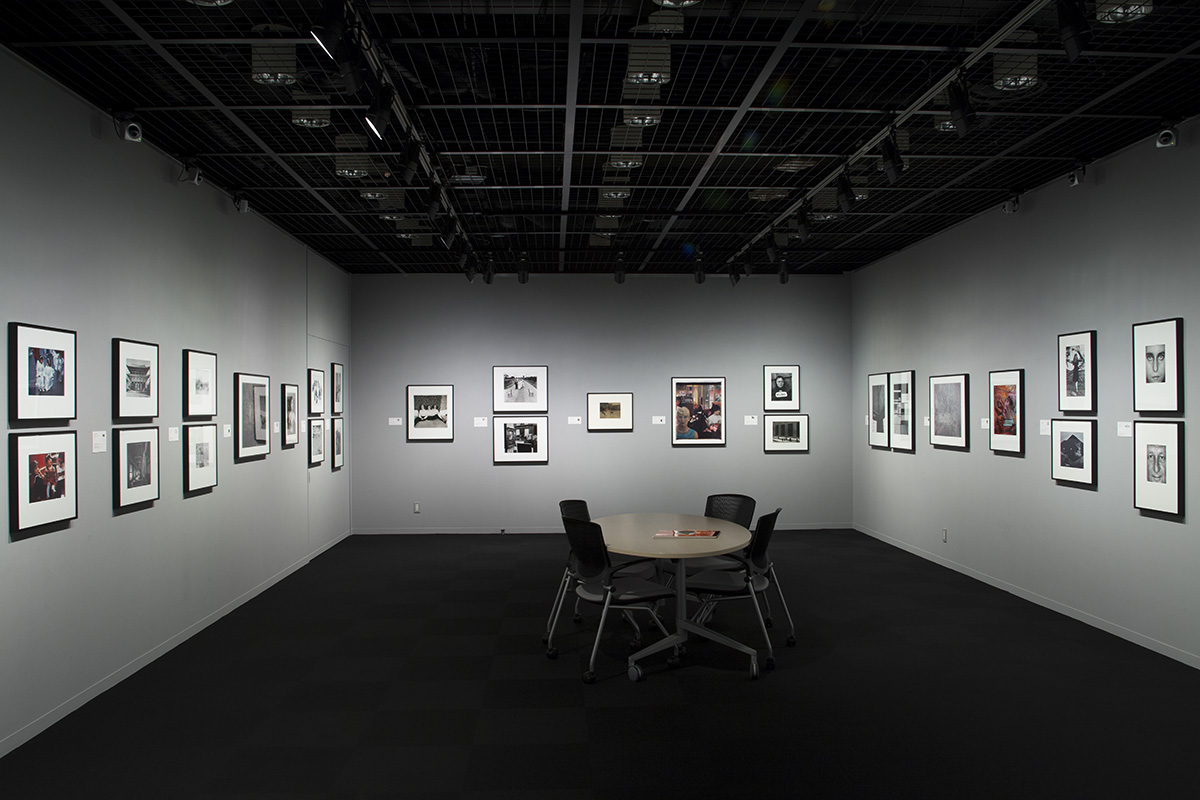
40th Anniversary Exhibition(2015)
2-4-7 Honcho, Nakano-ku, Tokyo
164-8678, Japan
